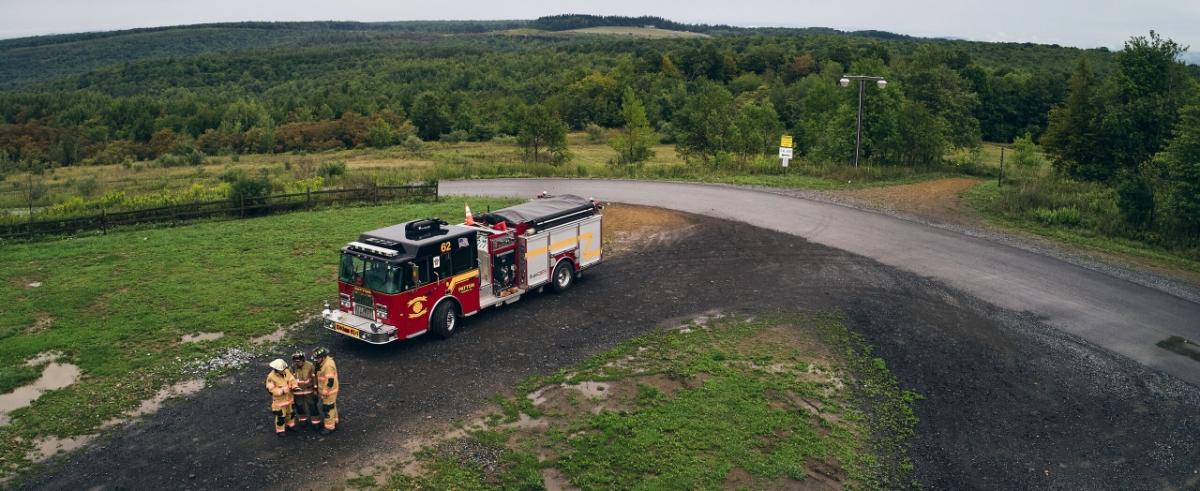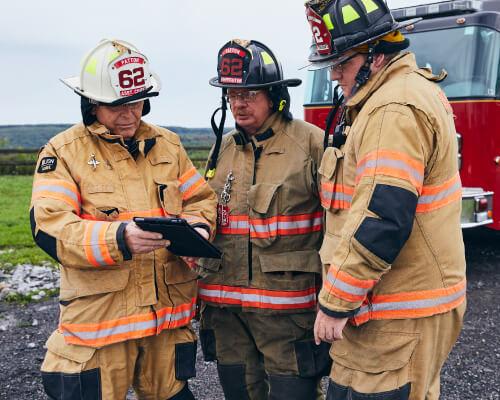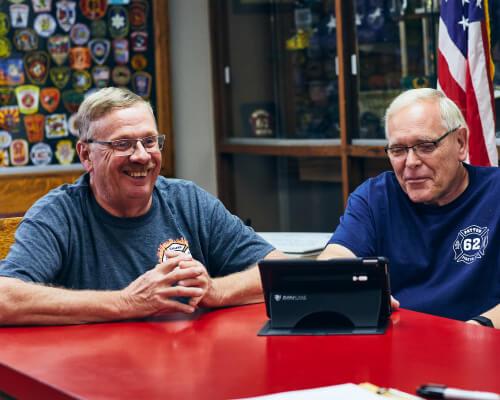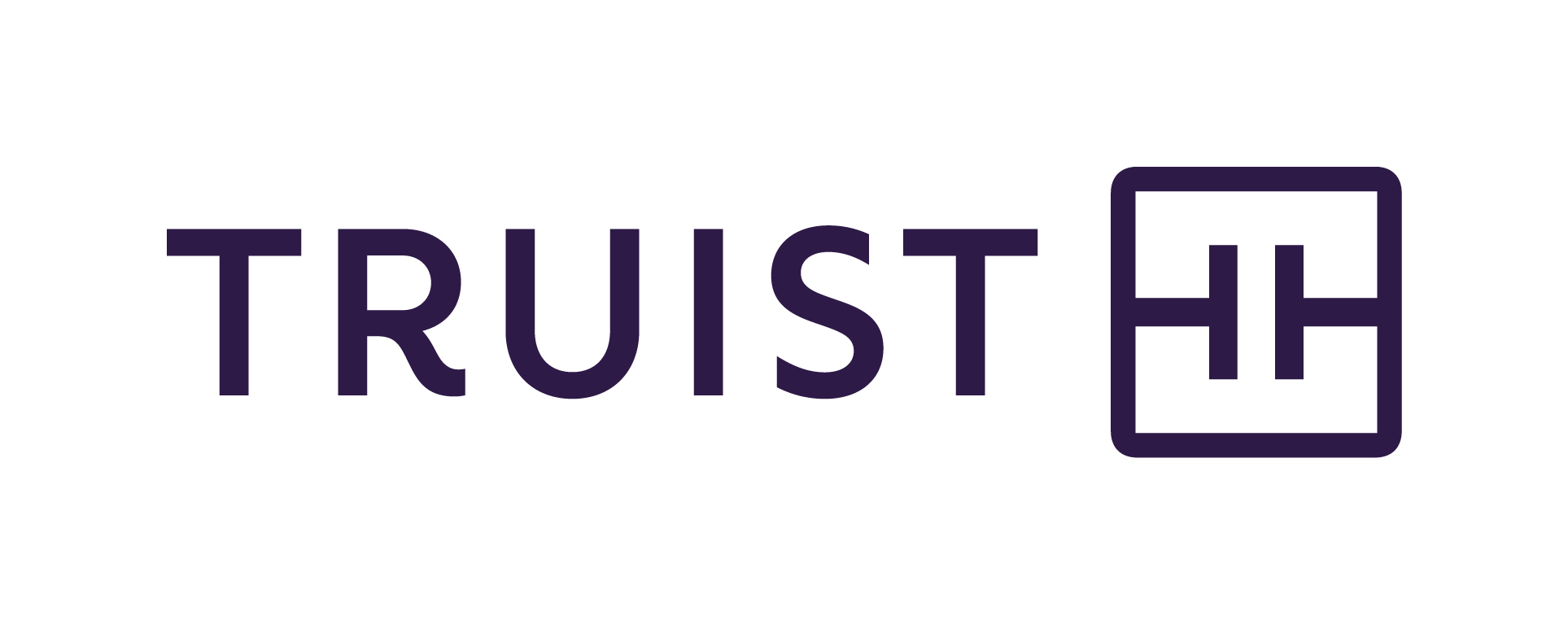Boosting Connections to First Responders in Rural America
As rural U.S. towns continue to struggle with basic connectivity, our community partner LISC is boosting signals for first responders and families in their communities.
Imagine you’re a volunteer first responder, tasked with answering a late-night call for help. Far from the nearest hospital, your GPS goes in and out as you careen through the backcountry roads. You approach the scene and your signal drops. You’re now alone in the dark.
For many first responders in rural communities, this scenario is just part of the job. Too many communities still lack access to mobile broadband, and in the case of an emergency, it can be a matter of life or death.
A 2019 study estimated that 42 million† Americans still do not have access to broadband. With help from a $2 million Truist Cares* grant, Local Initiatives Support Corporation (LISC) is bringing connectivity to these communities, which are some of the hardest-hit by COVID-19.
“When the pandemic shifted many interactions online, the connectivity gap that so many communities face became more challenging than ever,” said Alex Brame, Central Pennsylvania regional president at Truist. “As part of our larger response to COVID-19 relief needs through theTruist Cares* initiative, this $2 million grant to LISC has advanced their efforts to bridge the digital divide in underconnected communities like Northern Cambria through technical assistance, broadband connectivity, and technology grants.”
Keeping connected in Appalachia
An hour and a half east of Pittsburgh lies Northern Cambria, Pennsylvania, a small community embedded deep within the Allegheny Mountains.
“We are a microcosm of Appalachia,” says Jerry Brant, former executive director of the Northern Cambria Community Development Corporation (NCCDC) and a veteran volunteer firefighter. “High elderly population, low incomes, and very rural. My fire department covers 99 square miles with 7,500 residents.”
For a century, this area was a manufacturing juggernaut: steel, coal, textiles, and railroading. But in the late 1980s, heavy manufacturing went overseas, and today the coal industry has all but disappeared.
The area lacks highways to transport goods, so companies were loath to invest. Without jobs, people left too.
“We missed the boat 25 years ago because we didn’t have a highway system. Now we’re missing the boat because we don’t have a digital highway system,” Brant says.
The population is so small and spread so thin that broadband companies don’t invest in the area. “Here, they may pick up 24 customers per mile. In a midsize city, they’ll pick up 24 customers in a block.”
For most of America with basic broadband, the average download speed is between 12 and 20 megabits per second. For Brant, it’s 1. For others in Northern Cambria, there’s no service at all.
The golden hour: 60 minutes to save a life
As first responders, Brant and his colleague Matt Barczak depend on connectivity in the field. In some cases, it can be the difference between life and death. On most occasions when there’s a heart attack or a stroke, the fire department can be the first on the scene. Once Brant and Barczak arrive, they attach a monitoring device that transmits a patient’s vitals to the hospital in real time.
“If we’ve got connectivity,” says Barczak, “we can send a patient’s blood pressure, heart rate, everything to an emergency department who can tell us, ‘Jerry’s having a heart attack; here’s what you need to do. In the meantime, we’ll start preparing a cath table. We’ll be ready when you arrive.’”
They call it the golden hour. “From the time an incident occurs,” says Brant, “like a traumatic injury or heart attack, you want to get the patient to the hospital within one hour. Every minute after that, their chances of survival start to decrease.”
That hour goes fast — and the spotty service up and down backcountry roads can slow down first responders. Simply finding their way to an incident can be difficult without reliable GPS access.
“Without connectivity,” Barczak says, “it can mean the difference between a patient living or dying.”
There are even apps that first responders depend on when freeing victims trapped in vehicles or encountering hazardous materials.
“They’ll tell you where to cut on a BMW or a Chevy Silverado,” says Brant. “If a tanker truck overturns carrying toxic liquids or gas, there are fantastic digital tools to help first responders, but you have to be connected.”
From one bar to two: 30% better signal with in-vehicle boosters
With their Truist Cares* grant, LISC has been able to help NCCDC get firefighters like Brant and Barczak the tech they need to save lives in underconnected areas, which include 17 counties surrounding Northern Cambria alone.
The first tool that’s on the way is called a cradle, an in-vehicle wireless network that, according to the NCCDC, can improve the normal signal in the field by as much as 30%††.
“This cradle will be hardwired into the fire trucks,” says Barczak. “This will help in those times we have incidents in places with low connectivity. If we had one bar, now we’ll have two. And in some cases where we had no bars, we’ll have one. That bar can make all the difference.”
The grant means local fire stations are also getting a digital navigator, a local expert to help these stations get up to speed. “LISC is piloting the digital navigator program in nine rural locations across Appalachia,” says Caitlin Cain, VP of LISC and director of Rural LISC, and NCCDC is one of those important pilots. A digital navigator is an advocate in the community to help people get online, to help secure local funding and utility. The navigator understands the importance of digital inclusivity and understands that it’s an equity issue.
“The Truist Cares* grant is really helping some innovative and useful work happen with this funding.”
Each department will get tablets, which will house all of the necessary apps for first responders to take into the field. The digital navigator ensures each firefighter is trained on the technology — and the tech literacy of the digital navigator can have an impact across the community.
“If we’re able to increase a firefighter’s knowledge of how to use a device, a laptop, a tablet, when they go home, they’ll be able to use those devices along with their kids or their grandkids. They’ll be able to access programs and information that would benefit them,” says Brant.
As school systems resort to online learning, tech access and literacy have become tied to education.
“With the whole COVID situation and schooling,” says Brant, “what I hear from a lot of parents is that their internet might have been OK when they alone were trying to get on it. But now if you’ve got mom and dad trying to get on for work and two or three kids trying to do school online, nobody is getting anywhere with anything.”
“That’s why we’re working with Truist to expand access to broadband,” says Maurice A. Jones, LISC president and CEO, “so students and workers can connect to learning opportunities and compete in an innovation-driven economy. All of that will catalyze new opportunities throughout rural America for many years to come.”
Due to COVID-19, most firefighter training and certification has gone virtual, too. With these tools, stations can now participate in training they would otherwise miss.
A commitment to closing the divide
As many communities like Northern Cambria face similar challenges, Truist has distributed $2 million to LISC to help in three key areas of bridging the digital divide: technical assistance to build local digital ecosystems, broadband connectivity, and technology grants for things like devices and internet access.
Since 1979, LISC has connected public and private resources with underinvested places by leveraging strong community partnerships, believing that residents and local institutions understand their needs best. Operating through 88 local partners in 2,200 rural counties nationwide, LISC has infused more than $905 million into communities.
“It’s important that we take a long view of business investment, relief, recovery, and reconstruction,” says Jones, “so that we not only ease the strain of COVID-19 but also invest in the lasting economic infrastructure of rural communities.”
Truist is proud to be a part of resilient communities that motivate us to build better lives every day. Seeing how our community partners have stepped up in the face of COVID-19 inspired us to form the Truist Cares* initiative, a $50 million commitment to help support youth, seniors, the workforce, small businesses, and increased connectivity. For more stories about the work our partners are doing, visit truist.com/truistcares.
*About Truist Cares: Truist Cares is a cooperative effort between Truist Financial Corporation, Truist Foundation, Inc., and Truist Charitable Fund to provide communities, organizations, and individuals with disaster relief and assistance during the COVID-19 crisis.
About Truist
Truist Financial Corporation is a purpose-driven financial services company committed to inspire and build better lives and communities. With 275 years of combined BB&T and SunTrust history, Truist serves approximately 12 million households with leading market share in many high-growth markets in the country. The company offers a wide range of services including retail, small business, and commercial banking; asset management; capital markets; commercial real estate; corporate and institutional banking; insurance; mortgage; payments; specialized lending; and wealth management. Headquartered in Charlotte, North Carolina, Truist is the sixth-largest commercial bank in the U.S. with total assets of $504 billion as of June 30, 2020. Truist Bank, Member FDIC. Learn more at Truist.com.
† Data provided by broadbandnow.com
†† Data provided by NCCDC







